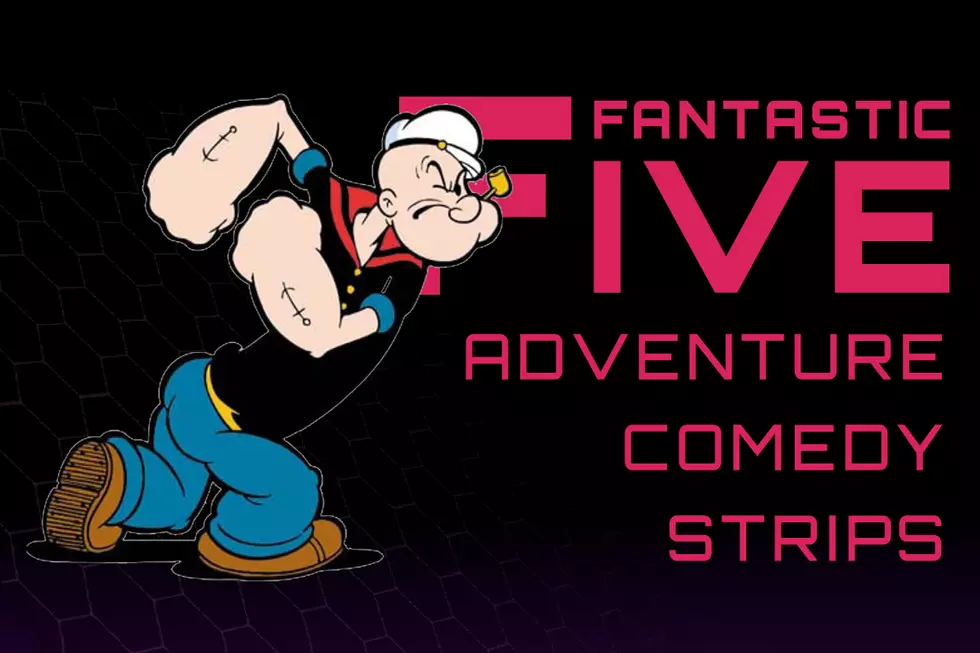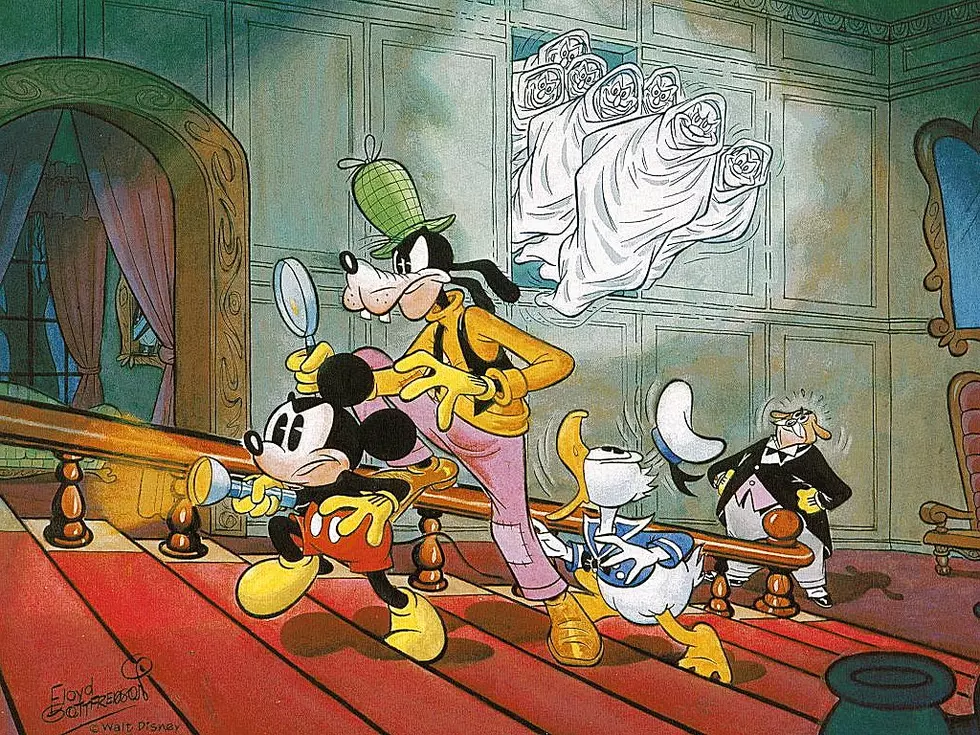
Mickey Mouse Comics from the Gurs Concentration Camp
 It's often been said that great art comes from great tragedy. It's another one of those phrases about art that has been repeated by the elbow-patched and goateed so often that it's almost become a platitude, as empty of meaning as the patently untrue "art imitates life."
It's often been said that great art comes from great tragedy. It's another one of those phrases about art that has been repeated by the elbow-patched and goateed so often that it's almost become a platitude, as empty of meaning as the patently untrue "art imitates life."
After all, it can just as easily be said that great beauty leads to great art. However, there remains a certain validity to the former statement – pain and tragedy have indeed inspired scores of powerful art. "Hamlet" was written after the death of Shakespeare's son; Picasso's "Guernica" and Kurt Vonnegut's "Slaughterhouse-Five" inspired by the large-scale devastation of modern war.
It's unsurprising, then, that the nightmare of the Holocaust has resulted in the creation of truly powerful art across all mediums, including comics. One could even argue that comics are uniquely prepared to portray the Holocaust because of their ability to provide both the individual pieces and the completed puzzle, to be static and fluid at once.
Maybe there's even something about its status as a medium shepherded and cultivated by Jews. There are several vital works on the subject – art spiegelman's Pulitzer-winning "Maus," Joe Kubert's heartbreaking "Yossel," and most recently, Dave Sim's unflinching "Judenhaas" – several others deserving of recognition, and most likely, several more to come.
Recently, though, the internet has unearthed another addition to the cannon, forged in the flames of genocide itself – Horst Rosenthal's "Mickey Mouse in Gurs."In 1940, Camp Gurs, an internment and refugee camp situated near the Pyrenees in Southwestern France, had been converted into a concentration camp for Jews of any nationality other than French – part of an armistice between Nazi occupiers and the Vichy government. Among those "undesirables" interned there were several artists, writers, and musicians.
Despite the deplorable conditions and nature of the imprisonment, they were afforded, as in other French camps, a certain amount of artistic freedom and cultural activity. Concerts and plays were performed; watercolorists allowed exhibitions. As a result, there remains a large amount of material created in and inspired by the realities of Gurs. Among those remaining works is the twelve-page cartoon booklet by Rosenthal, "Mickey au Camp de Gurs" – "Mickey Mouse in the Gurs Internment Camp – Published without Walt Disney's Permission."

Across those twelve time-battered pages, a classic work of sequential art is delineated. With surprisingly sunny prose and tender lines in a classic European cartoon style, Rosenthal exposes the hypocrisy of the Vichy government, the danger of bureaucracy, and the complete lack of reason behind his imprisonment.
By employing Mickey, already an international icon, as his stand-in and the reader's guide, he chops through the barriers of relate ability with a few quick movements of his satirical pen: Mickey becomes a cartoon Virgil, Gurs a practical purgatory, and the reader a confused Dante just trying to understand.

Thanks to a recent post on BoingBoing, this miniature masterwork has once again emerged from under the rubble of the horrors. The entirety of the work and a particularly illuminating article by Pnina Rosenberg can be downloaded via Scribd.
It's strange to read such a short, happy-go-lucky comic and feel a lump the size of a fist in one's throat. But the looming shadows of history and the unfortunate ironies of Walt Disney's political leanings make "Mickey Mouse in Gurs" hefty reading, deserving of wider dissemination, and inclusion in teachings of the Shoah.
While held in Gurs, Rosenthal produced two more booklets – "A Day in the Life of a Resident" and "A Small Guide through Gurs Camp." Along with several thousand others, Rosenthal was executed in Auschwitz in 1942.
Today a forest grows where the fences of Camp Gurs once stood.
More From ComicsAlliance


![Uncle Scrooge And The Nephews Return In This Year’s Mickey Mouse Holiday Special [Exclusive]](http://townsquare.media/site/622/files/2016/12/MickeyXMas00.jpg?w=980&q=75)




![‘Mickey Outwits The Phantom Blot’ Has The Best And Worst Of Mickey Mouse In A Single Hardcover [Review]](http://townsquare.media/site/622/files/2014/06/PhantomBlot01.jpg?w=980&q=75)

